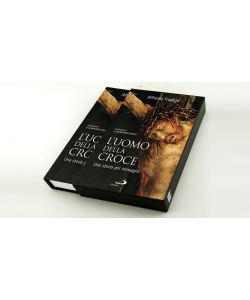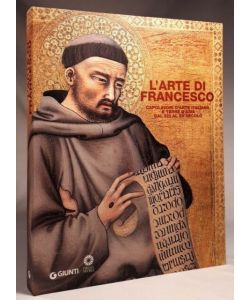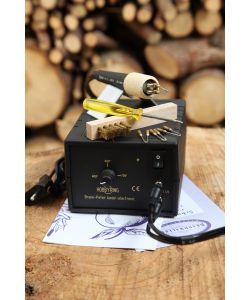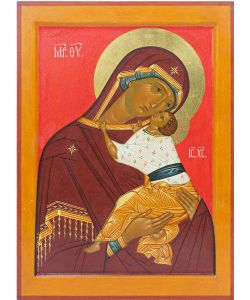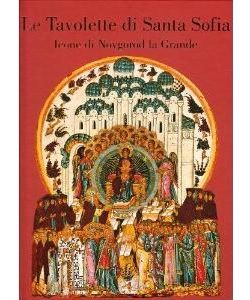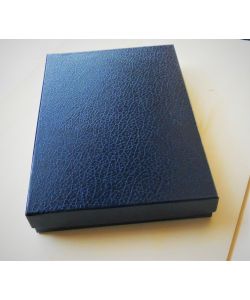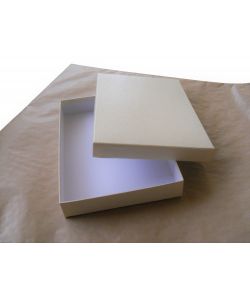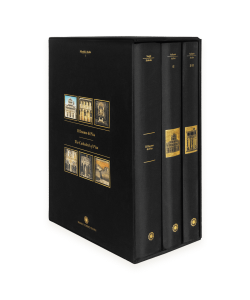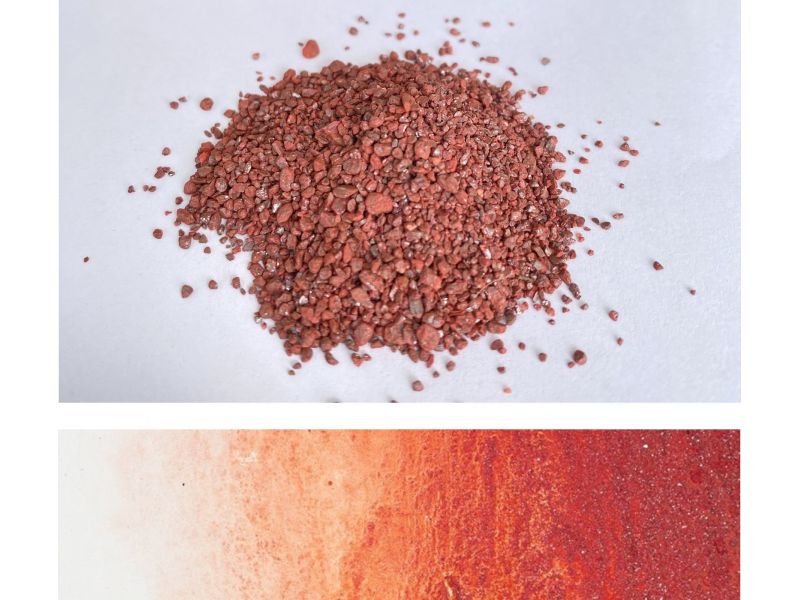
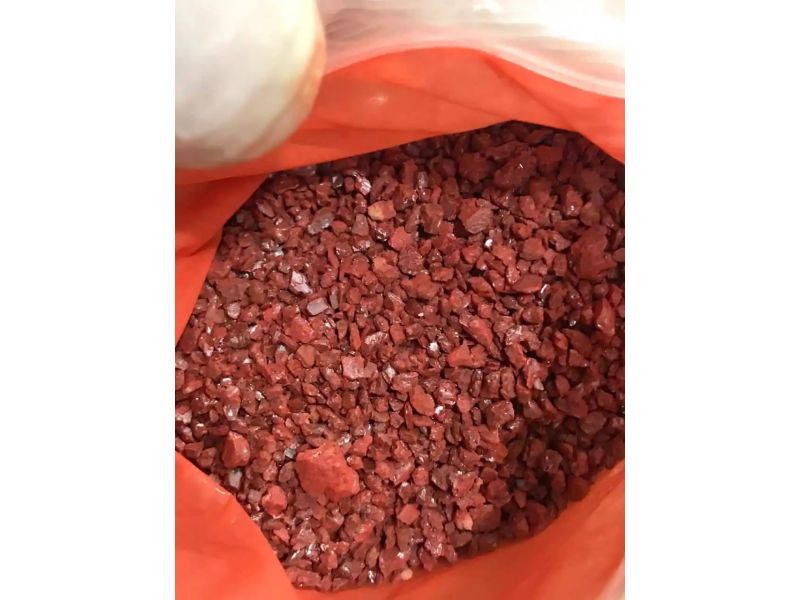
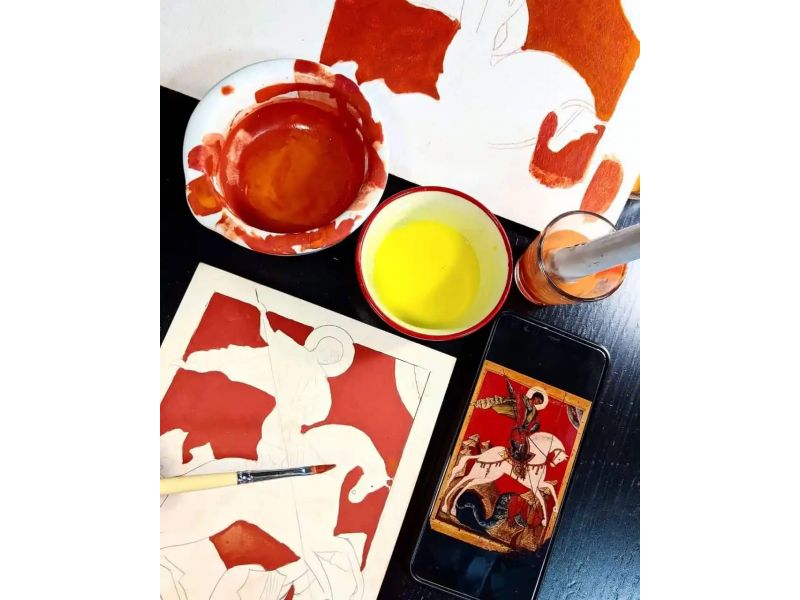
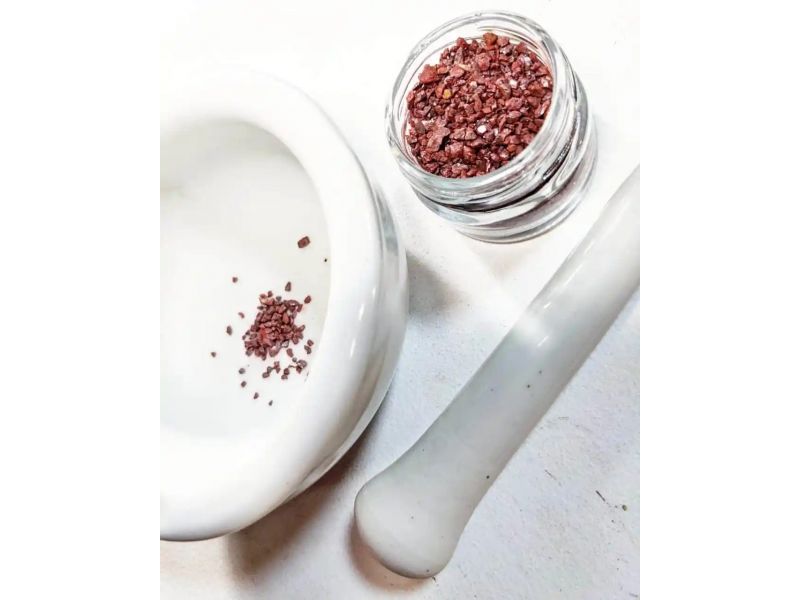




Cinnabar crystals in small pieces, mineral, Russian pigment
A crystalline variety of cold cinnabar in small pieces, without impurities.
To reduce it to a powder, crush it in a porcelain pestle and then grind it on a glass plate with a glass pestle.
Cinnabar is the most common mercury mineral. In Greek - Kivvapapi, in Latin - cinober. Chemical composition: mercury sulfide HgS (86.2% mercury and 13.8% sulfur). The most common minerals associated with cinnabar are antimonite, marcasite, pyrite, realgar, chalcedony, quartz, calcite and barite. In some deposits (Dzhizhikrut in Tajikistan, Steamboat Sprint in Nevada, USA) it is released from the waters of alkaline thermal springs with a temperature of about 80 ° C.
Cinnabar, translated from Arabic, means "dragon's blood" (the mineral on a fresh fragment resembles blood stains). Natural cinnabar was used as an artistic paint already in Assyria and ancient Egypt 600 years BC. At the time of Theophrastus (4th-3rd century BC), cinnabar was imported from Ethiopia, Colchis (the coastal part of today's Georgia) and Iberia (as the Greeks called both Spain and the territory of eastern Georgia), where it was mined in silver and lead mines. As early as the 2nd century BC, the Chinese brought cinnabar, then very valuable, across the Pamirs from the already known deposits of today's Kyrgyzstan, where it was mined in the Fergana Valley until the 13th century. Pliny in the 1st century AD, describes cinnabar, which was mined from silver and mercury mines, and the best was considered to be that mined "above Ephesus in the Cilbi fields". Cinnabar was imported to Europe from China. The ancient Greeks and Romans, under the name of millos u minium, used it to paint the body and sometimes statues.
In Russian icon painting, cinnabar was widely used since the 12th century. and in oil painting since the 18th century. Since ancient times, cinnabar was mined in the Nikitovsky mine (Donbass), and in 1886 the industrial development of the largest cinnabar deposit in Russia began.
In icon painting, especially in Novgorod icon painting of the 13th-15th centuries, cinnabar is one of the favorite colors for backgrounds ("lights") of the so-called red-background icons, where under a layer of drying oil cinnabar perfectly retains its color. In frescoes and tempera and fresco wall paintings it darkens and takes on a grayish tint (the action of hydrogen sulfide).
Mercury sulfide exists in two crystalline forms: the first is cinnabar, the second is black mercury. When heated to a temperature of 400°C (in a closed container), the former transforms into the latter (quickly and completely), while the reverse transformation occurs at 250-300°C (slowly and incompletely). This can be used to check the quality of cinnabar: ash residues will indicate the degree of contamination.
The shade of cinnabar depends on the dispersion of the pigment: the finer it is, the lighter it is. Larger particles give a light crimson tint ("carmine"). The color of cinnabar depends on two factors: the presence of impurities and the degree of crystallinity of the raw material. The color of pure cinnabar, free of impurities, is always a cold and bright scarlet. It is made "warm" by ochre impurities, even the slightest addition of limonite or goethite gives it a carrot tint, and its frequent brown tint ("hot cinnabar") is due to the presence of microparticles of hematite, antimonite or galena.
It has good covering and colouring power, it is poorly resistant to heat and light. Insoluble in acids and alkalis (soluble only in white spirit). Heated to 200 °C, it completely decomposes into mercury vapors and sulphur dioxide and, in the absence of air, it sublimes. Toxic.
The bright color of cinnabar fades over time. In contact with lead and copper pigments and with oil containing lead oxide, cinnabar turns black.
Cinnabar shows a different resistance to film-forming substances: it preserves well in emulsions and adhesive binders, but much worse in oil and in the presence of resins and wax. There are references to the use of cinnabar on vegetable glues by ancient Russian painters, and to the fact that these glues do not alter the color at all and at the same time ensure a rather strong adhesion of the paint layer to the surface of the plaster.
G. Bakenguz, who spent 15 years studying cinnabar, wrote in 1911 that cinnabar with different binding substances has different concentrations. The worst effect is copaiba balsam, followed by resins and various fatty oils. Cinnabar is best preserved with tempera and watercolor. A common property of cinnabar from different deposits is that its luster increases with prolonged grinding.
Cinnabar stored in a test tube for a long time turns black faster. Cinnabar does not like iron, so it should not be stored in metal cans or crushed in an iron mortar.
In the largest mercury and antimony deposit in Khaidarkan in Kyrgyzstan, cinnabar is found in the form of inclusions in the rock up to 3-5 cm in size. The deposit was discovered as a result of ancient mining of cinnabar and antimonite. Chauvai, located in the same region, is famous for its beautiful lumps of cinnabar crystals up to 1.5-2 cm in size, combined with quartz and fluorite crystals. In Nikitovka (Donbass)
| Cinnabar crystals in small pieces, mineral, Russian pigment, gr. 10 | Stock: 14 - COD. CINPEZZRU10 | |||
| € 19,00 |

|
|||
| Cinnabar crystals in small pieces, mineral, Russian pigment, gr. 50 | Stock: 3 - COD. CINPEZZRU50 | |||
| € 90,00 |

|
|||
